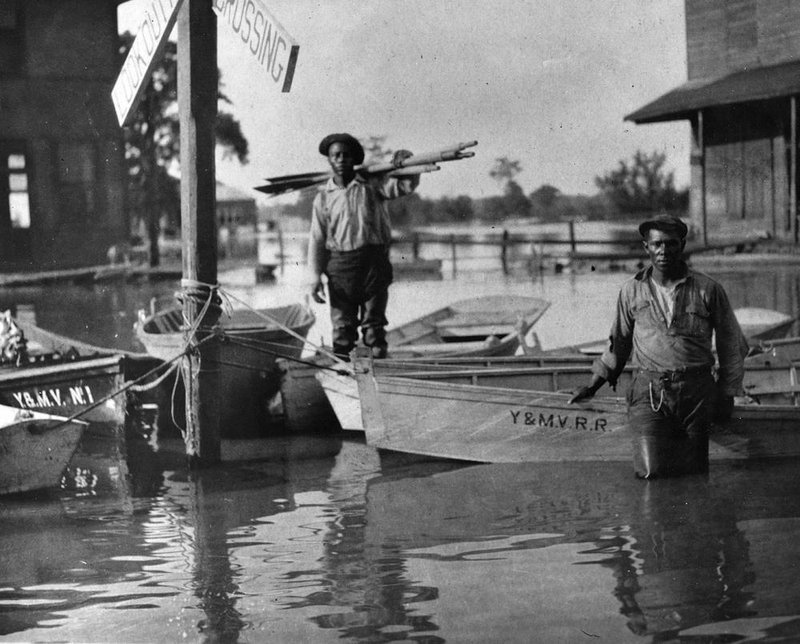Student Work
Flood and Depression
By: Lawrence Routt

Unemployed men queued outside a depression soup kitchen in Chicago 1931. Photo: Public Domain
April Showers Bring October Downers
Neilson’s vast archives that date back to the 1830s show a vast amount of business transactions. The ledgers can be traced back to certain significant dates during two times of economic downfalls for Mississippi and the overall United States. These two events are the great flood of Mississippi in 1927, and the Great Depression that struck the U.S. in 1929. Both of these events proved to be financial disasters for almost every citizen of the United States, and consumers were not able to buy the things they usually were able to buy. I was able to see from the pages from the date April 29th of 1927 and January 11, 1930, two dates that both saw the US in great financial distress.
The first page of the ledger that I viewed is from 1927 on April 29th, this was one of the worst days for Mississippi during the great flood. Levees were blown up by dynamite and resulted in massive flood in several areas of southern Mississippi. This flooding rose up to over 30 feet, and destroyed parts of the land. This displaced thousands of Mississippians and also hurt Louisiana and Arkansas. After viewing the ledger from this date, I can see that there was not a lot of business on that day. The Oxford area was not severely hurt by the flooding, but the economy of Mississippi was highly affected due to the fact that many businesses in Oxford relied on certain areas in the delta. The business that was conducted that day was mostly just charged to certain customer’s accounts.[1] This shows that most of the business done that day was from loyal customers that were most likely wealthy enough to have accounts at Neilson’s. The flooding had to have affected how average income consumers normally spent their money.

Flooded Greenville, Mississippi, April, 1927 Image Ownership: Public domain
In 1929, the Wall Street stock market crashed and left the U.S. in a Great Depression. The south was severely affected by the great depression. Banks were starting to close and forced consumers to withdraw all of their funds and depend on loans. When viewing the page from the ledger dating 1930. This was the start of a new year where the US was in one of its most significant economic downfalls. The ledger from this date actually shows more business being conducted that day during a year of the depression; I can see many more different names buying things that day[2] Sadly, both pages from these ledgers do not show the exact items that the customers were buying. Even if there were a lot of business transactions that day, they might have been cheaper goods and foods that would help people still support their families.
Both the great flood and depression were huge setbacks for the South; we can see through the archives the precise history of how consumption was affected. Comparing both pages from April 29th and January 11th shows an interesting difference of business conducted. The accounting methods from these two dates are difficult to understand, but the evidence displayed on the pages still gives a glimpse of the amount of customers during these rough times.
Ledger 39, January 11, 1930 from Neilson’s Collection, Department of Archives and Special Collections, The University of Mississippi Libraries.

Ledger 38, October 29, 1929 from Neilson’s Collection, Department of Archives and Special Collections, The University of Mississippi Libraries.
[1] Nielson’s ledger #39 (11 January 1930) Neilson’s Collection, Department of Archives and Special Collections, The University of Mississippi Libraries
[2] Nielson’s ledger #38 (29 October 1929) Neilson’s Collection, Department of Archives and Special Collections, The University of Mississippi Libraries
